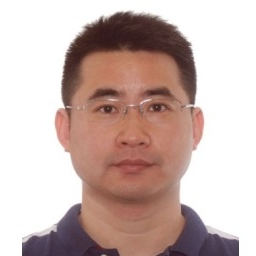State-of-the-Art Optical Inspection Technology
A special issue of Photonics (ISSN 2304-6732). This special issue belongs to the section "Optical Interaction Science".
Deadline for manuscript submissions: closed (29 February 2024) | Viewed by 11711
Special Issue Editors
Interests: precision manufacturing; micro-nano optics; defect inspection; optical design; illumination design; visible light communication; machine vision; image processing
Special Issues, Collections and Topics in MDPI journals
Interests: machine vision; polarization; visual measurement; wavelet algorithm; machine learning; non-imaging optical design; illumination design
Special Issues, Collections and Topics in MDPI journals
Interests: manufacturing process mechanics; 3D printing; ultra-precision manufacturing and metrology; freeform measurement and characterization; manufacturing process optimization; fring projection; 3D vision; VR/AR/MR; light field; machine learning
Special Issues, Collections and Topics in MDPI journals
Special Issue Information
Dear Colleagues,
In the development process of modern industry and science, there are various requirements for industrial inspection technology. Industrial inspection technology is a complex interdisciplinary field that involves optical devices, optical processing, artificial intelligence, neurobiology, signal processing, computer science, image processing, machine learning and other fields. Especially in recent years, a series of important research achievements have been made in the field of industrial inspection technology. It is within this context that we announce the Special Issue of Photonics on “State-of-the-Art Optical Inspection Technology”.
This Special Issue intends to provide a timely opportunity for scientists and researchers, as well as engineers, to discuss and summarize the latest inspection methods in industrial applications. We invite papers that include, but are not exclusive to, the following topics: defect inspection; machine learning; hyperspectral imaging algorithms; image super-resolution; machine vision; image synthesis methods; illumination design; optical design; image fusion; non-destructive testing and evaluation; precision measurements and metrology; freeform design; manufacturing technology; precision machining; precision polishing; additive manufacturing. Both theoretical and experimental studies are welcome, as are comprehensive reviews and survey papers.
Dr. Xing Peng
Dr. Xiang Sun
Prof. Dr. Lingbao Kong
Guest Editors
Manuscript Submission Information
Manuscripts should be submitted online at www.mdpi.com by registering and logging in to this website. Once you are registered, click here to go to the submission form. Manuscripts can be submitted until the deadline. All submissions that pass pre-check are peer-reviewed. Accepted papers will be published continuously in the journal (as soon as accepted) and will be listed together on the special issue website. Research articles, review articles as well as short communications are invited. For planned papers, a title and short abstract (about 250 words) can be sent to the Editorial Office for assessment.
Submitted manuscripts should not have been published previously, nor be under consideration for publication elsewhere (except conference proceedings papers). All manuscripts are thoroughly refereed through a single-blind peer-review process. A guide for authors and other relevant information for submission of manuscripts is available on the Instructions for Authors page. Photonics is an international peer-reviewed open access monthly journal published by MDPI.
Please visit the Instructions for Authors page before submitting a manuscript. The Article Processing Charge (APC) for publication in this open access journal is 2400 CHF (Swiss Francs). Submitted papers should be well formatted and use good English. Authors may use MDPI's English editing service prior to publication or during author revisions.
Keywords
defect inspection
machine learning
hyperspectral imaging algorithms
image super-resolution
machine vision
image synthesis methods
illumination design
optical design
image fusion
non-destructive testing and evaluation
precision measurements and metrology
freeform design
manufacturing technology
precision machining
precision polishing
additive manufacturing
Benefits of Publishing in a Special Issue
- Ease of navigation: Grouping papers by topic helps scholars navigate broad scope journals more efficiently.
- Greater discoverability: Special Issues support the reach and impact of scientific research. Articles in Special Issues are more discoverable and cited more frequently.
- Expansion of research network: Special Issues facilitate connections among authors, fostering scientific collaborations.
- External promotion: Articles in Special Issues are often promoted through the journal's social media, increasing their visibility.
- Reprint: MDPI Books provides the opportunity to republish successful Special Issues in book format, both online and in print.
Further information on MDPI's Special Issue policies can be found here.







